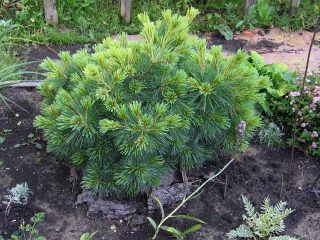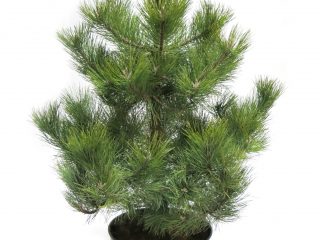Content
Today, many summer residents and owners of country houses are improving their properties by planting evergreen conifers, in particular pine trees. Ephedra around the perimeter of the dacha or along the path leading to the house is very beautiful. But there are times when the rich green color fades and yellowness begins to appear. And it is at this moment that most property owners begin to worry about why the pine tree is turning yellow. There are many reasons leading to this phenomenon: it can be a natural process of renewal of needles or a serious disease of the tree.
Natural Causes of Yellowing
The main reason why pine needles turn yellow is natural renewal. And if yellowing of conifer needles was noticed in the autumn, there is no need to fear for the health of the pine tree. After all, it is at this time of year that the annual biological process of changing conifer needles occurs.
The needles may turn yellow due to the pine tree being transplanted to a new location. This yellowing process is also natural, as the tree is going through a period of adaptation to new conditions.It is at this time that the pine begins to produce young shoots, replacing old ones.
Not all pine needles turn yellow during a natural process; generally, up to 50% of the crown undergoes renewal, while young shoots and ends of branches should remain green. The needles on the lower branches of the pine tree near the trunk begin to turn yellow and renew themselves first. Then over time it falls off. The lower branches freed from coniferous cover must be cut off. Thus, the pine tree will begin to develop more actively, which will contribute to the rapid appearance of new shoots.
In addition to the biological process of changing shoots, needles turn yellow for the following reasons:
- unfavorable climatic conditions;
- exposure to animals and insects;
- vital activity of microorganisms.
Therefore, if you want to plant a pine tree on your summer cottage, a person must understand that the plant may find itself in an environment that is unusual for it. Thus, the correct and healthy growth of pine directly depends on proper care for it.
Adverse climatic conditions
If the needles begin to turn yellow in the summer, then you should be wary. Most likely the cause of yellowness is unfavorable climatic conditions associated with hot and dry weather. In this case, the pine tree does not have enough moisture to nourish the upper branches and needles, which leads to their drying out. Heat has a particularly bad effect on young, recently transplanted pine seedlings. Since after the replanting process the root system is practically not adapted to the new soil, the roots are not able to fully absorb all the nutrients, and the lack of moisture aggravates the process, which leads to drying. Mature, rooted trees are considered more resistant to drought.
Heavy rainfall also has a detrimental effect on the condition of the pine tree and its crown. Oversaturation with moisture can lead to pine disease and subsequent yellowing of coniferous shoots.
Polluted air has a direct impact on the growth of conifer needles and their frequent renewal. It will be uncomfortable for pine to grow near large highways, as well as near industrial enterprises.
Incorrect landing
Correct planting plays an important role in the good and healthy growth of pine trees, as well as in the formation of a beautiful crown. Having decided to plant a pine tree on your site, you need to pay special attention to choosing a seedling. The color of the needles of a young tree should be bright green without yellowing. The roots of the seedling should be branched, “alive” in appearance and without damage.
After purchasing a seedling, you need to choose the right place to plant it. It must be open. When planting several trees, a distance of up to 5-6 m should be maintained between them, since an adult pine tree can have a crown girth of up to 5 m.
During planting, requirements are also placed on the composition of the soil; it must be loose and sandy.
The root collar should not protrude above the ground during planting. The roots of the tree must be located deep underground. And to prevent the soil from drying out, mulching should be done, this will also contribute to slow growth weed.
If the pine tree was planted correctly, its crown should not turn yellow. But if, nevertheless, the needles began to turn yellow, and this process began to occur from below, without affecting the young shoots at the ends of the branches, then, most likely, the tree is adapting to new conditions.
Improper care
Another reason why pine needles turn yellow is improper care.
As a rule, pine does not like excessive moisture, but it also does not tolerate drought well. Young trees just transplanted to the site require watering at least once a week. In this case, up to 30 liters of water should be poured under the tree. In subsequent years, the pine tree needs to be watered 2-3 times during the summer, depending on precipitation. You need to water with warm water, up to 90 liters per tree.
Top dressing also affects the color of the crown. For the correct bright green color, pine needs phosphorus and iron. If the needles begin to turn yellow, this indicates a lack of these particular microelements.
In the absence of proper care, excessive or infrequent watering, as well as without additional feeding, the transplanted tree may not only begin to turn yellow, but also die.
Pests
If it was noticed that the pine needles began to turn unnaturally yellow, this may indicate that the tree is infested with beetles. Bark beetles or pine beetles are the most common pests of coniferous trees.
If the pine tree is susceptible to infestation by these beetles, the following signs also appear:
- resinous stains on the trunk and branches;
- the appearance of small light brown sawdust, the so-called drill flour, on the trunk or the soil near it.
The presence of bark beetles and pine beetles, as well as their untimely extermination, will lead to the subsequent death of the pine.
Diseases
If it was noticed that the tree began not only to turn yellow, but also to acquire a bright red tint with a gray coating after the snow melted, then this indicates a disease caused by a fungus.
A fungal disease of coniferous trees is called Schutte.Most often, this disease affects young plantings, but it is also dangerous for an adult plant.
The main symptom of the disease is the rapid death and yellowing of needles after winter. Often the needles will turn orange with a rusty tint within a week. Adult plants begin to respond to the development of the disease a month after the snow cover melts. Typically, the lower branches of a mature pine tree are susceptible to dieback.
Needles that have been affected by fungus and turned yellow also have a reddish tint with black spots and lines. And they don't fall off for a long time.
Also, red dry needles can symbolize damage by fusarium. This fungal disease prevents the passage of nutrients from the roots to the branches and pine needles, which can lead to complete yellowing and drying out of the crown.
Preventive actions
To avoid the onset of unnatural yellowing of the needles, it is recommended to comply with the following requirements for planting seedlings and properly care for the pine tree:
- When planting a seedling on a plot, the roots must be deepened well. It is also not allowed to leave the root collar of the plant above the ground.
- After planting, the tree must be regularly watered and fed to avoid its withering, and also to prevent the needles from turning yellow.
- If the needles begin to turn yellow after the appearance of pests, you should definitely call a specialist who will help you properly treat the tree. You can treat pine yourself using a solution of karbofos.
- Early detection of a fungal disease will allow you to save the tree in time. The plant must be carefully examined to notice why the needles began to turn yellow.To avoid this kind of disease, it is necessary to promptly remove weeds and remove fallen pine needles, as well as dry branches. To prevent fungal disease, you can use a fungicide.
Conclusion
There are many reasons why pine trees turn yellow. Some of them are natural, while others are caused by the activity of living organisms. But with proper care and periodic inspection of the tree, you can promptly identify the cause of why the pine needles began to turn yellow and promptly eliminate it. And then a healthy, lush and evergreen beauty will delight you for years with its wonderful appearance and aroma.











